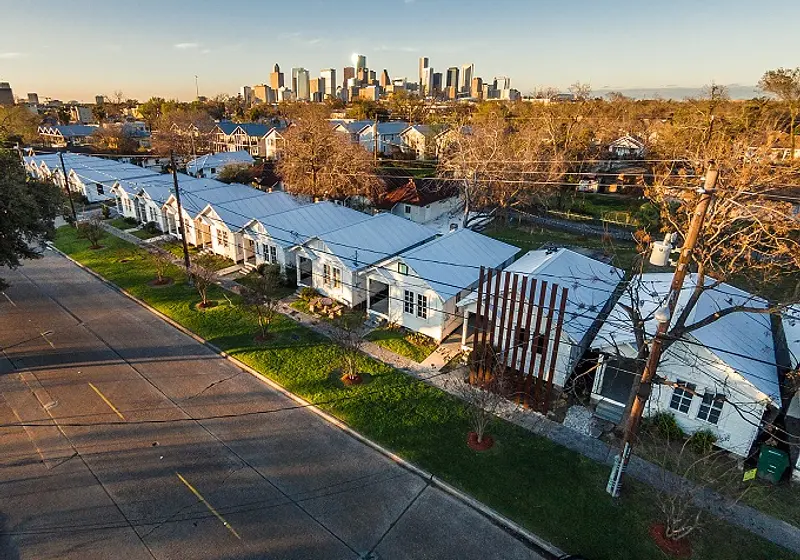Deep-rooted racism, fear of minorities, and the rapidly increasing rate of incarceration in the United States contribute to the inordinate ratio of people of color locked up in jail or convicted of felonies, resulting in a new racial hierarchy between those who are free and those who are perceived as criminals. Fully understanding how people of different races are treated through all stages of the legal system is of the utmost importance as it can bring all Americans to a better understanding of the racism that is pervasive in American society, as well as ways this system can be dismantled from the inside out.
In our society, African Americans are disproportionately represented through all stages of the criminal justice system, from stop and searches all the way to prison population. This disparity occurs due to a number of reasons, none more prevalent than public stereotyping and implicit bias. The public tends to believe that law enforcement officers, prosecutors, and justices are above holding implicit biases or stereotypes, but these stereotypes are the main contributors to mass incarceration in the United States today.
Let us slide into your dms 🥰
Get notified of top trending articles like this one every week! (we won't spam you)Mass Incarceration is Directly Tied To Slavery and America's History of Racism
According to the NAACP, the National Association for the Advancement of Colored People, “African Americans represent 12.5% of illicit drug users, but 29% of those arrested for drug offenses”. The act of arrest itself is performed by the police, most often street cops. The fact that there is such a great disparity in these numbers is a testament to one of two possibilities. Either police officers are actively seeking out African American drug users and ignoring White users, or police are more likely to search African Americans than white people due to intrinsic bias.
Regardless of which one it is, or whether it is a combination of both possibilities, there is a flaw in the way police officers handle drug crimes. Most proponents and opponents of mass incarceration do not fully believe that white people are inherently better or less criminal than people of color, but the implicit biases instilled in them by society lead them to act on these societal stereotypes.
James Comey, former director of the FBI and independent voter says that if two black men are walking on one side of the street and two white men are walking on the other side, regardless of actual criminal activity, “the two young black men look like so many the officer has locked up … two white men … do not…the officer does not make the same association about the two white guys”.
Comey’s point illustrates that the police officers may not be overtly racist, but rather are conditioned by society into being biased against the black men. The modern plague of mass incarceration is tied directly to America’s roots of slavery and racism, which continues to impact people of color disproportionately in the current day and age.
Due to the battle with racism in American history, formerly confederate states are more likely to hold racist values as intrinsic beliefs than formerly union states. For example, according to Erin Duffin through a study conducted by the U.S.
Department of Justice, Bureau of Justice Statistics, in former confederate states like Louisiana and Mississippi, 619 to 719 out of 100,000 people are currently incarcerated as of 2017, whereas in formerly Union states like Massachusetts and Rhode Island, only 120-170 out of 100,000 people are currently incarcerated as of 2017, and in currently neutral states such as Pennsylvania and Virginia, 375 to 437 out of 100,000 people are incarcerated at as of 2017.
These incarceration numbers draw a direct comparison to the history of these particular states. The 13th Amendment of the United States Constitution states that “neither slavery not involuntary servitude… shall exist inside the United States… except as a punishment for crime”.
This statement in essence outlawed slavery, and southern slave owners were angered due to a combination of racism and loss of revenue due to the lack of slave labor. By incarcerating black people for negligible offenses, the loophole in the amendment states that these incarcerations provided justification for slavery. This planted the seeds of mass incarceration in the United States.
Using the earlier provided numbers, it can be seen that those former slave states now house more inmates than former Union states, a direct parallel to the loophole in the 13th Amendment that originally caused the first wave of mass incarceration in the late 19th Century. The United States has made great strides since the fall of Jim Crow laws to integrate, diversify, and equalize every member of society.
However, racism and racial discrimination still exists, especially in all aspects of today’s legal system, from the beat cops manning the streets, to the high and mighty prosecutors in the courts, to the rigid justices of the Supreme Court. Although mass incarceration and other types of legal bias have been discussed more frequently in recent years, these fundamentally flawed ideals have not been formally combated and all of these measures feed into a systemic racism which greatly dehumanizes and disrespects people of color, especially black men, furthering an unjust racial hierarchy in society.
Take the Quiz: Which Indian city is the perfect holiday spot for you!?
Let's match you with an Indian city that you would love!
The Myth of “Black on Black crime” and The Role Of Prosecutors In Legal Bias
Those who believe that racism is extinct in modern America argue that the criminal justice system fosters no purposeful bias or hateful intention towards minorities and does not punish due to race but due to the nature of the crime committed. They argue that the great majority of police officers are not racist and that police brutality is the product of a high-risk job like law enforcement, as well as the environment in which these officers practice.
A study by the Proceedings of the National Academy of Sciences (PNAS) claims that “as the proportion of black or Hispanic officers involved in a FOIS (Fatal Officer Involved Shooting) increases, a person shot is more likely to be black or Hispanic than white”. PNAS argues that white officers hold no racist beliefs by trying to prove that black officers are likely to be involved in a FOIS with black victims.
However, due to America’s history of segregation, there tends to be an abundance of black people in certain communities and an abundance of white people in other communities.
This is not an accurate generalization of all communities, but rings true for many generationally poor areas of the country. In these areas, it then makes sense that there are more black officers in black communities and white officers in white communities.
This causes black officers to be more involved in a FOIS with a black victim, not a lack of racism or biases in white officers. According to political commentator and respected journalist Heather MacDonald, the number of white victims killed unjustly by police is grossly underrepresented in the news. She claims that “had any of these victims been black, the media and activists would probably have jumped on their stories… instead because they are white, they are known”. MacDonald in this instance raises a point that is not untrue.
It is true that black citizens shot by white officers receive more press coverage as a whole than white citizens shot by officers of any race. However, rather than vying for more press coverage, MacDonald’s efforts would be more fruitful trying to end FOIS’ as a whole by using her position as a political commentator to lobby for safer and more extensive training, more rigorous seminars, and more education for officers overall.
MacDonald’s stance on police brutality is that white people experience FOIS’ as well, but the number of people killed in FOIS’ should not be a contest won by people in any race. Instead, efforts should be focused on eliminating police brutality as a whole and improving living conditions for any person of any race.
Those who do not believe that the criminal justice system as a whole is steeped with racism argue that mass incarceration does not stem from racism or the War on Drugs, but rather entirely from prosecutorial bias, blaming prosecutors for the claims of racism in the legal system.
According to Adam Gopnik, staff writer for the New Yorker, “between 1990 and 2007, while the crime rates began to fall, the number of line prosecutors went up by fifty per cent, and the number of prisoners rose with it”.
Moderate conservatives like Gopnik agree that there is something paradoxical about the fact that the number of prisoners increased while the number of crimes fell. They attribute this solely to a large growth of prosecutors around the United States.
However, while a growth of prosecutors is a facet of the rapid rate of incarceration in the United States, what moderate conservatives refuse to acknowledge is the persistence of racist beliefs throughout the criminal justice system. In short, the problem lies with the biases of the prosecutors and not with the sheer number of prosecutors in itself.
A study conducted by the Women Donor Network found the result that “95 percent [of prosecutors] were white and 75 percent were white men”. Though prosecutors are staggeringly white, the WDN’s study does nothing to prove that prosecutors are inherently racist just due to an overwhelming whiteness.
But Michelle Alexander, professor, civil rights activist, and author, states that ““similarly situated whites were far more successful than African Americans and Latinos in the plea-bargaining process; in fact, at “virtually every stage of pretrial negotiation, whites are more successful than nonwhites”””.
Alexander essentially states that regardless of class, whites are always given more assistance by prosecutors. In connection with the fact that 95% of prosecutors are white, Gopnik’s assertion that mass incarceration is tied to an exponential increase in prosecutors falls flat. After all, if this were true, equal amounts of whites and nonwhites would be receiving aid from prosecutors. However, the discrepancy in aid between whites and nonwhites points to a clear prosecutorial bias, that whether implicit or explicit, impedes people of colors’ ability to receive equal sentences to whites who committed the same offense.
Discrimination in Jury Selection and The True Nature of The War on Drugs
Despite the arguments against the belief of racism in the criminal justice system, this bias exists in great capacity and serves to create a divide between white people and people of color, and is representative of the racism deeply rooted in America’s history. Mass incarceration in America is directly tied to corrupt and racist government policies which upped incarceration rates during a time when crime rates were decreasing greatly.
As mentioned earlier, mass incarceration and the imprisonment of minorities can be directly correlated to the War on Drugs implemented by Richard Nixon and continued on by Ronald Reagan.
The War on Drugs was a campaign launched in the 1970s and 1980s under the pretense of bringing down drug crimes and stopping drug offenders in the United States. However, white people tended to use drugs in their homes while black people tended to use drugs on street corners, and for that reason, the constant vigilance of the War on Drugs program caused a disproportionate rise in black inmates and prisoners. John Ehrlichman, former domestic policy chief during the Nixon administration, openly admitted that “[the Nixon administration] knew [they] couldn't make it illegal to be either against the war or black, but by getting the public to associate the hippies with [censored] and blacks with heroin … then criminalizing both heavily, [they] could disrupt those communities”. Ehrlichman was a prominent staffer during Nixon’s time as president and his open admittance to the fact that the War on Drugs was a racist policy meant to criminalize drugs in order to remove many black people from society and confining them in prisons instead is a clear indication of how mass incarceration was shaped by racism and the War on Drugs. The prison system in America today is tainted by prejudices held by figures of the past, whose racist policies expand daily to incarcerate increasing numbers of black men.
But mass incarceration is only the big picture of the racist elements in the criminal justice system. Jury selection, though it may seem straightforward, ties into prosecutorial bias and can become one of the most powerful weapons a racially biased prosecutor may use. Batson v.
Kentucky, decided in 1986, set in place the rule that no prospective juror was to be dismissed on account of their race or ethnicity. However, prosecutors use other so-called non-racial reasons to dismiss prospective jurors. According to Michelle Alexander, it is acceptable to dismiss a juror for “lack of education, unemployment, poverty, being single, living in the same neighborhood as the defendant, or prior involvement with the criminal justice system” as long as it is not explicitly stated that the real reason for the peremptory strike is the prospective juror’s race.
This method of using less controversial generalizations to dismiss jurors when race is the true factor in dismissal is a form of prosecutorial bias that goes unchecked. According to a study conducted by Ursula Noye, Vice President of Reprieve Australia, regarding the Caddo Parish District Attorney’s office in Louisiana, “prosecutors chose to strike black prospective jurors at three times the rate of not blacks,” a detail which shows the bias held during peremptory striking.
Essentially, due to the overwhelming whiteness of juries, black men are less likely to get a fair trial than white men due to a disparity in peremptory striking. Whether prosecutors are unknowingly holding this bias, or whether they are knowingly dismissing away the black jurors, this disparity causes a greater number of black people than white people to go to jail for the same offense due to the implicit biases of an all-white jury vs. a jury of people of different races.
However, even though jails and courts play a big factor in the oppression of people of color, the problem starts on the streets, with beat cops and stop and searches. The current system for stop and searches are the first step to creating a major racial disparity in prisons.
According to Ben Poston and Cindy Chang of the Los Angeles Times, “24% of black drivers and passengers were searched” in Los Angeles compared to only “5% of whites… yet whites were found with drugs, weapons, or contraband in 20% of searches compared with 17% for blacks”. This staggering statistic shows that four times as many blacks are stopped and searched by the LAPD than whites.
But whites are more likely to be carrying something illegal. The fact that a higher percentage of black people are pulled over is indicative of an implicit bias in police officers that then extends all the way to more blacks getting arrested, and therefore more blacks in jail.
Mass incarceration is affected by several small systems throughout the criminal justice system but none as egregious as the police, especially through stop and searches specifically intended to look for drugs or other illegal material. Racism in the criminal justice system exists and is multifaceted, all aspects of the system coming together to further oppress people of color in the United States.
History Will Repeat Itself If We're Not Careful
Ultimately, racism throughout the criminal justice system is simply a reflection of American history. The criminal justice system in today’s America has proven that racism does not die but is simply reborn in new ways, such as jury selection, stop and searches, mass incarceration as a whole, and many other systems. These systems hinder the ability of people of color to live safely and securely.
A white teenager with drugs in the glove compartment of his car often has nothing to worry about. A black teenager has everything to worry about.
According to the NAACP, “African Americans and whites use drugs at similar rates, but the imprisonment rate of African Americans for drug charges is almost 6 times that of whites”. This is tied directly to the history of the United States, to the War on Drugs, which Ehrlichman admitted was a war on people of color. They say that “African Americans are incarcerated at more than 5 times the rate of whites”.
This is tied to the loophole in the 13th Amendment which allowed former slave owners to imprison blacks and use them for slave labor. And though much of the racism in the American criminal justice system is tied to history, much of it can be tied to ignorance and implicit bias. If more structures were implemented in society to combat implicit biases, incarceration levels would drop significantly. Prosecutors and cops would be less likely to look at people of color suspiciously.
After all, history cannot be changed. But whether society ignores history or learns from history, that is the key to the growth of the human race.
















